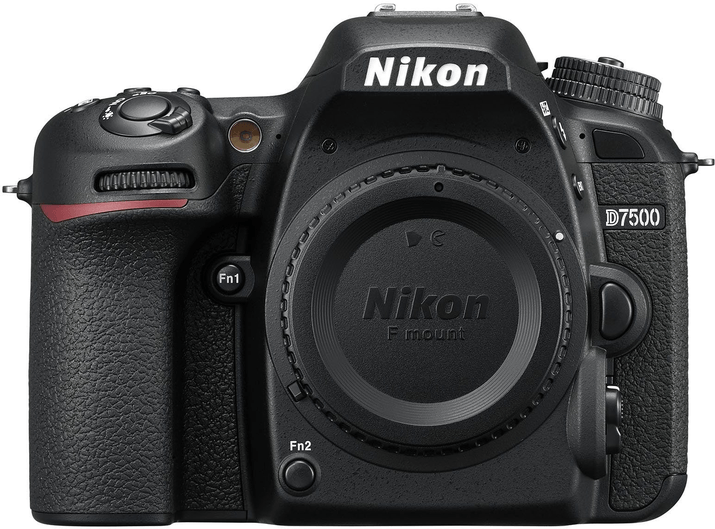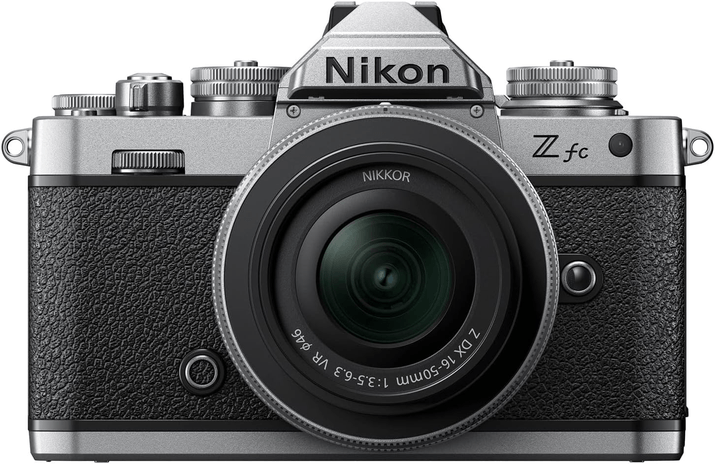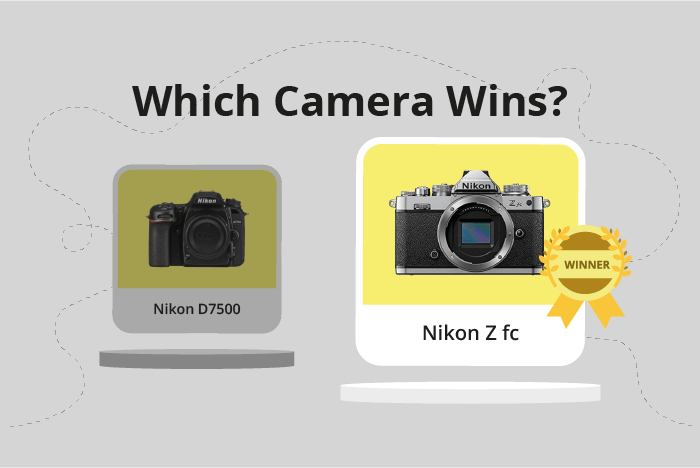Nikon D7500 vs Z fc Comparison
Nikon D7500

Nikon Z fc

The Nikon Z fc takes the lead with a score of 72/100, while the Nikon D7500 trails closely behind at 70/100. Both cameras share several specifications, such as their announcement and release years (2017 and 2021, respectively). The Nikon D7500 is a DSLR camera, while the Nikon Z fc is a mirrorless model.
The Nikon Z fc holds an advantage in weight and size, being lighter at 445g and more compact with dimensions of 135 x 94 x 44mm. This makes it easier to carry and handle. Additionally, it has a lower launch price of $959, making it more affordable than the D7500, which had a launch price of $1250.
On the other hand, the Nikon D7500 has a larger body, measuring 136 x 104 x 73mm, and weighs 720g. This might appeal to some photographers who prefer a more substantial grip.
Considering the specifications, the Nikon Z fc is a better choice for those seeking a lightweight, compact, and more affordable camera. However, the Nikon D7500 may be suitable for those who prefer a larger, more traditional DSLR body.
Nikon D7500 vs Z fc Overview and Optics
The Nikon Z fc triumphs over the Nikon D7500 in optics with a score of 72/100, a 4-point lead compared to the D7500’s 68/100. Both cameras share some common specifications, such as having CMOS sensors, APS-C sensor sizes, and a lack of image stabilization. However, the differences in other specifications contribute to the superiority of the Nikon Z fc.
The Nikon Z fc possesses a higher megapixel count at 21 compared to the D7500’s 20.9, which allows it to capture more image detail. Additionally, the Z fc has a faster shooting speed of 11 frames per second, compared to the D7500’s 8. This enables the Z fc to capture action and fast-moving subjects more effectively. The Nikon Z fc also benefits from a newer Expeed 6 processor, which contributes to faster processing and better image quality. Furthermore, the Z fc’s DXOMARK sensor score of 97 outperforms the D7500’s score of 86, indicating superior image quality and dynamic range.
On the other hand, the Nikon D7500 uses the Nikon F DX lens mount, which offers a wider range of compatible lenses compared to the Nikon Z fc’s Z mount. This could be an advantage for photographers who already own Nikon F-mount lenses or prefer the selection available for this mount.
Taking these points into consideration, the Nikon Z fc holds the advantage in terms of optics performance, with a higher megapixel count, faster shooting speed, better processor, and superior sensor score. The Nikon D7500, however, may still appeal to those who prefer the Nikon F DX lens mount for its wider lens compatibility.
Nikon D7500 vs Z fc Video Performance
The Nikon Z fc outperforms the Nikon D7500 in video capabilities, scoring 91 out of 100 compared to the D7500’s score of 70. Both cameras share some common specifications, such as 4K max video resolution, 3840 x 2160 max video dimensions, and built-in time-lapse functionality. However, the Nikon Z fc surpasses the D7500 in a few key aspects, making it a superior choice for videographers.
The most significant advantage the Nikon Z fc has over the D7500 is its higher max video frame rate of 120fps, compared to the D7500’s 30fps. This allows for smoother, more detailed slow-motion footage, providing videographers with greater creative freedom and control. Additionally, the higher frame rate contributes to the Z fc’s overall better video performance, which is reflected in its higher score.
On the other hand, the Nikon D7500 does not offer any distinct advantages over the Z fc in terms of video capabilities. Both cameras share the same max video resolution, dimensions, and time-lapse functionality, leaving the D7500 with no unique features to outshine the Z fc in this category.
In comparing the video capabilities of the Nikon D7500 and Nikon Z fc, it is evident that the Z fc is the superior camera. Its higher max video frame rate of 120fps sets it apart from the D7500, allowing for more versatile and creative video options. While the D7500 is still a capable camera, its lack of distinct advantages in video capabilities makes the Nikon Z fc the better choice for those focused on videography.
Nikon D7500 vs Z fc Features and Benefits
The Nikon D7500 and Nikon Z fc both achieve a feature score of 83 out of 100, making it a tie in this category. These cameras share several common specifications, including touchscreen capabilities, flip screens, WiFi, and Bluetooth connectivity. Neither of the cameras has GPS functionality.
The Nikon D7500 boasts a larger screen size of 3.2 inches compared to the Nikon Z fc’s 3-inch screen. This difference provides users with a slightly bigger display for reviewing images and navigating through menus. However, the Nikon Z fc has a higher screen resolution of 1,040,000 dots, compared to the D7500’s 922,000 dots, which results in a sharper and clearer image display on the camera’s screen.
In terms of unique advantages, the Nikon D7500 does not offer any significant benefits over the Nikon Z fc, given their identical feature scores and shared specifications. On the other hand, the Nikon Z fc outperforms the D7500 in screen resolution, providing a better image viewing experience.
Considering these factors, both cameras excel in different areas. The Nikon D7500 offers a larger screen, while the Nikon Z fc has a higher screen resolution. As the overall feature scores are equal, the choice between these cameras ultimately depends on individual preferences and priorities. If a larger screen size is more important, the Nikon D7500 would be the better option. However, if a higher screen resolution is a priority, the Nikon Z fc would be the ideal choice.
Nikon D7500 vs Z fc Storage and Battery
The Nikon D7500 outperforms the Nikon Z fc in storage and battery with a score of 43/100 compared to the Z fc’s 29/100. Both cameras have one memory card slot and accept SD, SDHC, and SDXC cards. However, the Z fc is compatible with UHS-I cards, offering a slight advantage in storage speed.
The D7500’s superior battery life of 950 shots is a significant advantage over the Z fc’s 260 shots. This extended life is due to the D7500 using the EN-EL15a battery type. The Z fc uses the EN-EL25 battery, which provides fewer shots per charge.
On the other hand, the Z fc offers USB charging, a feature absent in the D7500. This convenience allows users to recharge the battery without removing it from the camera.
Considering these factors, the Nikon D7500 is the better choice for those prioritizing battery life and shooting capacity. However, the Nikon Z fc offers the advantage of USB charging and UHS-I compatibility, which may appeal to some users.
Nikon D7500 vs Z fc – Our Verdict
Are you still undecided about which camera is right for you? Have a look at these popular comparisons that feature the Nikon D7500 or the Nikon Z fc:

